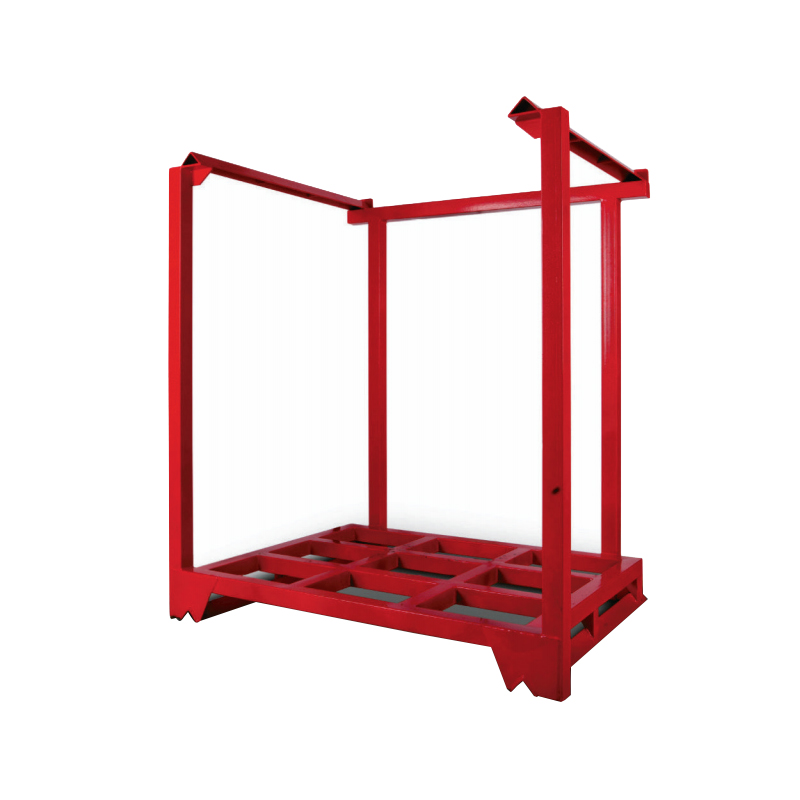In industrial environments, space is often at a premium, and businesses continually look for ways to make the most of their available storage areas. Stacking racks have emerged as an efficient solution for warehouses, factories, and other facilities, offering the ability to store items vertically and maximize floor space. But while the primary benefit of stacking racks lies in their space-saving design, the safety and stability of these racks—especially when stacking multiple units—are key concerns. The design of stacking racks plays a pivotal role in addressing these issues and ensuring that businesses can store items securely without compromising on safety or accessibility.
At the core of any stacking rack system is the ability to stack multiple units vertically, creating a multi-level storage structure. This is where the design becomes critical. One of the primary factors that contribute to stability is the material and structure of the racks. High-quality stacking racks, such as Metal Stacking Racks, are typically constructed from durable materials like steel, ensuring they can handle heavy loads while maintaining structural integrity. The strength of the materials used directly affects how much weight the racks can bear, but equally important is how well the racks distribute that weight when stacked. Poor weight distribution can lead to instability, so many racks are designed with reinforced frames and cross-bracing to ensure even load support.
Another crucial design element that affects stability is the way the racks connect when stacked. Properly designed stacking racks come with locking mechanisms or interlocking grooves, which ensure that the racks fit securely on top of each other. This prevents slippage or misalignment, both of which can pose serious risks in a busy industrial setting. Inverted Stacking Racks, for instance, are designed with an inverted U-shape, which allows the upper rack to nest securely on the lower one, adding an extra layer of stability. This kind of precision design ensures that even when the racks are stacked to their maximum height, there is minimal risk of toppling over, making them safe for high-density storage environments.
Safety features built into the design also contribute to the ease of use, which in turn affects how efficiently a business can operate. Stacking racks are typically designed to be easily assembled and disassembled. This ensures that workers can quickly stack or unstack the units without the need for additional tools or complex mechanisms. Easy handling is essential not only for operational efficiency but also for reducing the risk of accidents caused by improper handling. In facilities where tire storage is required, for example, customized Tire Storage Racks are specifically designed to accommodate the shape and size of tires, preventing rolling or shifting, further enhancing safety.

However, stacking racks' design must account not just for the racks themselves but for how they interact with other elements in the workplace. This includes compatibility with forklifts, pallet jacks, and other material-handling equipment commonly used in industrial settings. For instance, racks designed with forklift-access openings can be easily moved and stacked without destabilizing the overall structure. This seamless integration with warehouse operations ensures that workers can move and organize inventory efficiently without compromising the stability of the stacked racks.
Another aspect of stacking rack design that directly impacts safety is the height to which the units can be safely stacked. Manufacturers provide guidelines for maximum stack height based on the design and load-bearing capacity of the racks. Exceeding these recommendations can result in structural stress and potential collapse. The best-designed stacking racks come with clear instructions and visual indicators that help businesses adhere to safe stacking practices.
The design of stacking racks plays a fundamental role in ensuring the stability and safety of the system when stacking multiple units. From the materials used to the structural design, locking mechanisms, and ease of handling, every aspect of these racks is carefully considered to maximize storage efficiency without sacrificing safety. Businesses can confidently use stacking racks to increase storage capacity, knowing that well-designed units provide a secure and stable solution for their industrial storage needs. As space-saving solutions like Metal and Inverted Stacking Racks become more common, understanding how their design impacts safety will be key to getting the most out of these versatile storage systems.
